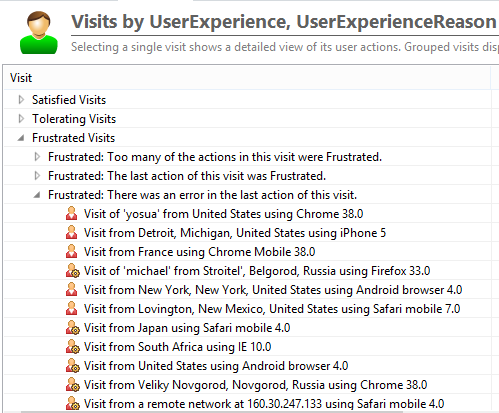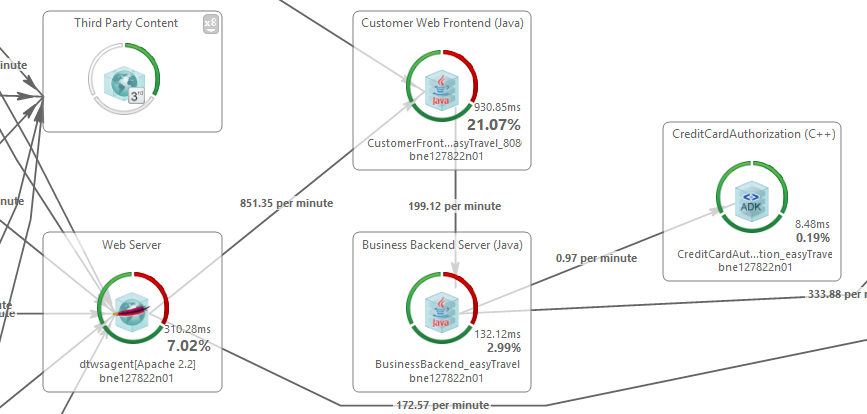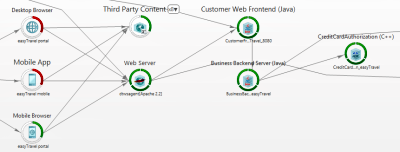If you are a repeat vacationer making reservations online through your favorite travel site, you know all about digital trust. It is the hard earned goodwill cultivated over millions of successful transactions. Travelocity, Expedia, Orbitz and others all share one major fear when protecting their brand; losing their digital trust. Gaining new loyalty based on digital trust appears to be easier than winning it back once it’s been lost.
In today’s digital revolution loyalty is for sale, and that loyalty can change in an instant. Large discount travel sites operate on high volume and thin margins. They have little to offer in exchange for your loyalty, except digital trust. Their product can be had for nearly the same price by their fiercest competitor a few clicks away and they know that you know that. Adopting a solid end-to-end APM (Application Performance Management) strategy is key to maximizing the digital trust your users rely on.
SPEED – THE NEW DIGITAL CURRENCY
Users are constantly judging your application even when they don’t know it. Users expect content fast. 3 second page load times are a benchmark of the past. No matter how good the UX design is, speed is the digital currency of trust. When your site slows down your users worry, and trust is compromised.

APM vendors have been tracking this for years now. Dynatrace, for example, makes the rankings of industry leaders publicly available, as part of their digital experience monitoring platform. However, even if Dynatrace is not benchmarking your site, you should be.
There is an old saying that goes “You can’t improve what you don’t measure“. Nothing could be truer when it comes to the performance of your website or application and the digital trust of your brand.
DevOps teams are tasked with releasing new features fast. This requires automation everywhere, which also increases the risk of introducing un-detected performance defects. A single SQL search query with a missing or corrupt index may take a user response from 1 second to 10+ seconds. Uncached content or objects can slow pages and user actions to a crawl, or even take a server down under load. If application performance management is not an automated part of your deployment process, defects introducing performance bottlenecks easily creep in and immediately affect the user experience and digital trust of the user.
THE PLATFORM ECONOMY
“Move to the cloud“, they said.
“The cloud has auto elastic scaling“, they said.
“We have built-in monitoring“, they said.
“It’s cheap. You only pay for what you use“, they said.
In this digital ecosystem, users want it faster. They expect continuous feature and usability innovation. Traditional IT operations teams understandably shy away from change. Each and every release has the potential to light up cell phones and call an emergency gathering to the war room costing both real dollars in support costs and potentially unrecoverable dollars in lost brand reputation.
Poorly performing applications also require greater elastic scaling compared to the same application that is continually optimized for performance. A single undetected performance defect released in an aggressive and agile DevOps environment could cost a company tens of thousands of dollars in unnecessary elastic cloud scaling. The only real way to track the platform economy is with the adoption of a solid APM strategy and tooling. Nothing short of an APM tool that tracks performance from end-to-end of your entire application delivery chain will do. You must be able to see the time contribution of every tier in your application, and all in the context of the end user. Infrastructure monitoring tools are important, but for different reasons. They only work in a silo, and they don’t give you real visibility into what a user is actually experiencing.
PREDICTABLE DISRUPTION

Google, Amazon, eBay and other masters of our digital ecosystem realize that their speed of innovation hinges on one very important truth. Failure is expected, not feared. Netflix went so far as to introduce intentional failure directly into their infrastructure. Their success can be partially attributed to an ability to fail forward when defects are discovered. They’ve mastered the discipline of predictable disruption.
APM platforms track performance and usability at every tier along your application delivery chain. When properly implemented they provide a window into the experiences of every individual end user. Your DevOps teams can accurately measure and baseline the most important transactions in your application. This gives you the ability to see performance trends changing in real time and take action before a defect runs wild and damages your brand.
Traditional network and host monitoring tools aren’t built for this fine-grained insight. For example, a host disk may be low on space, or a CPU may be nearing 100% utilization, but that provides zero insight into how users are being impacted and force you to make assumptions. However, a modern APM tool like Dynatrace will drill down from a single user session and tell you exactly where that user spent their time inside your app, exactly where they encountered errors in the journey, and give you instant visibility to the line of code that raised an alert. When debugging there is no need to “reproduce” the problem. A support engineer can simply export that very production session with all necessary data, response times, errors, user experience context, etc, and send it directly to a developer for remediation.
MANAGING DIGITAL TRUST
Steve Jobs once said, “You‘ve got to start with the customer experience and work back toward the technology – not the other way around.”
APM is a crucial discipline in managing your digital trust. The first step in optimizing and improving your customer experience is the task of identifying WHERE to optimize and what result the end user experienced, closely followed in priority by understanding the improvements or lack thereof in the context of the end user experience.
Choose your APM strategy wisely. Managing your digital trust depends on a holistic view of your users, not a sample of them. If you don’t know the performance and usability experience of every user that visits your site, you are bleeding digital trust.
Convective provides fully managed Application Performance Management strategy, integration, and tooling support. Contact us to schedule a demonstration.


